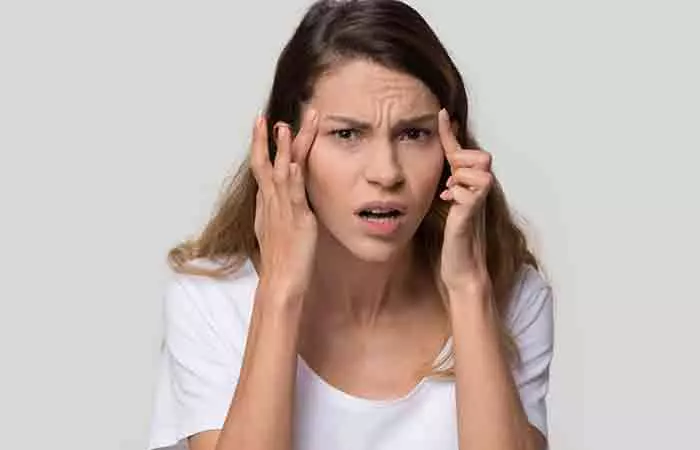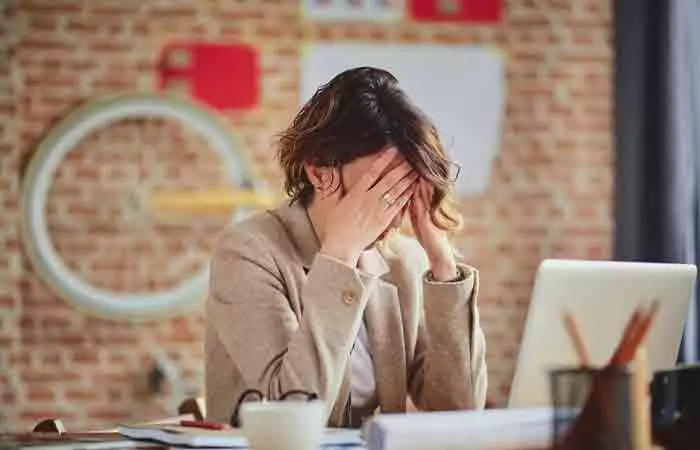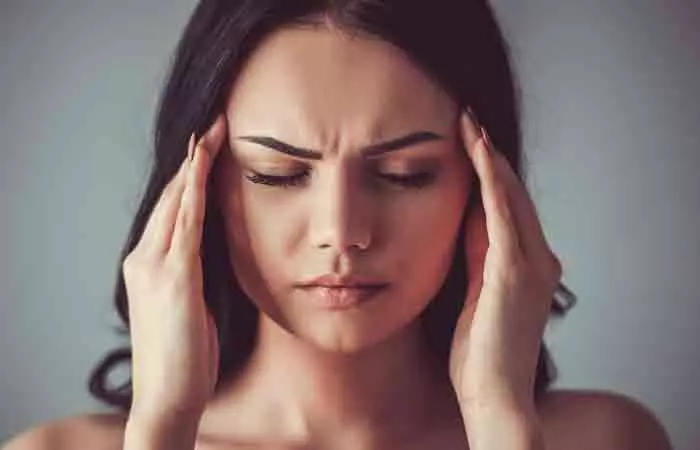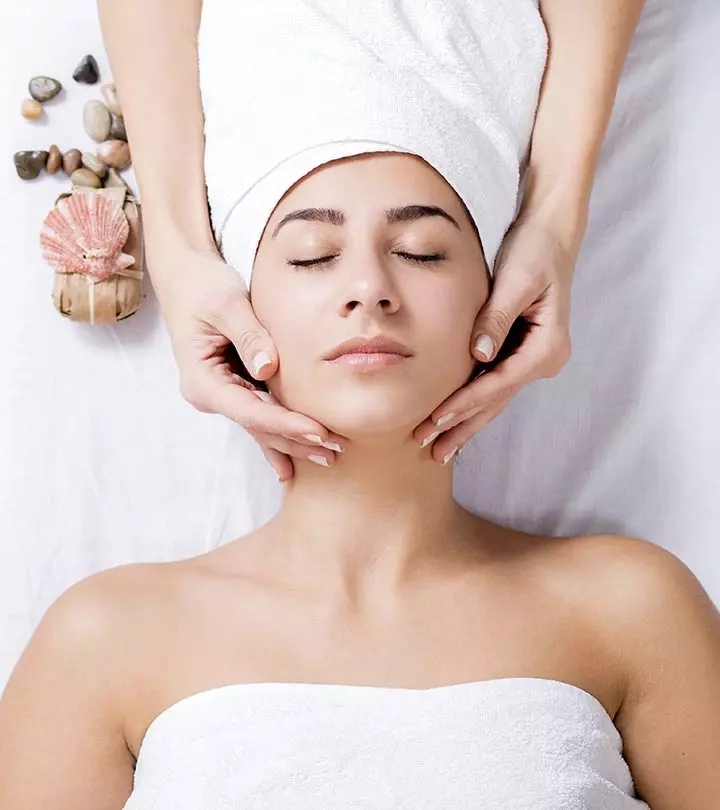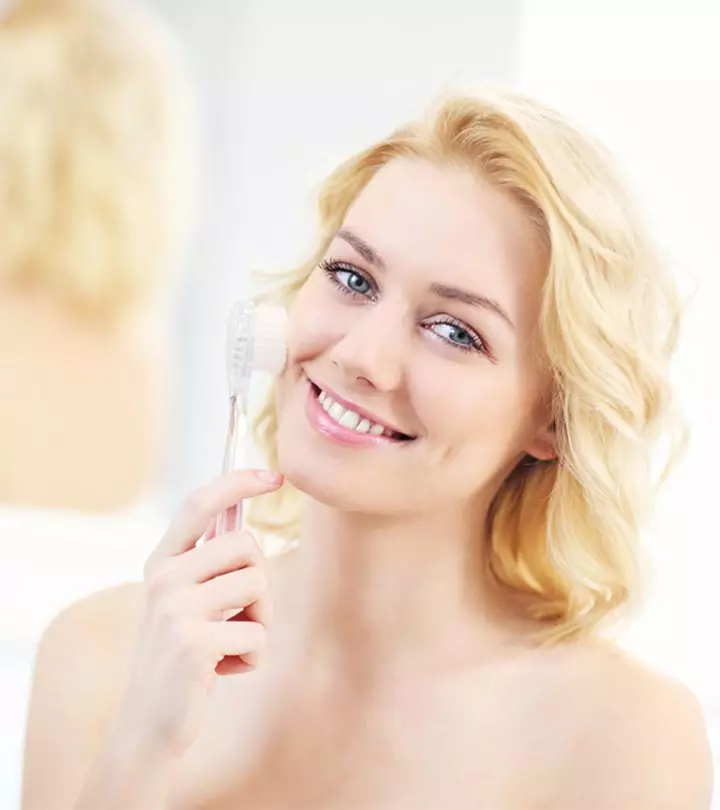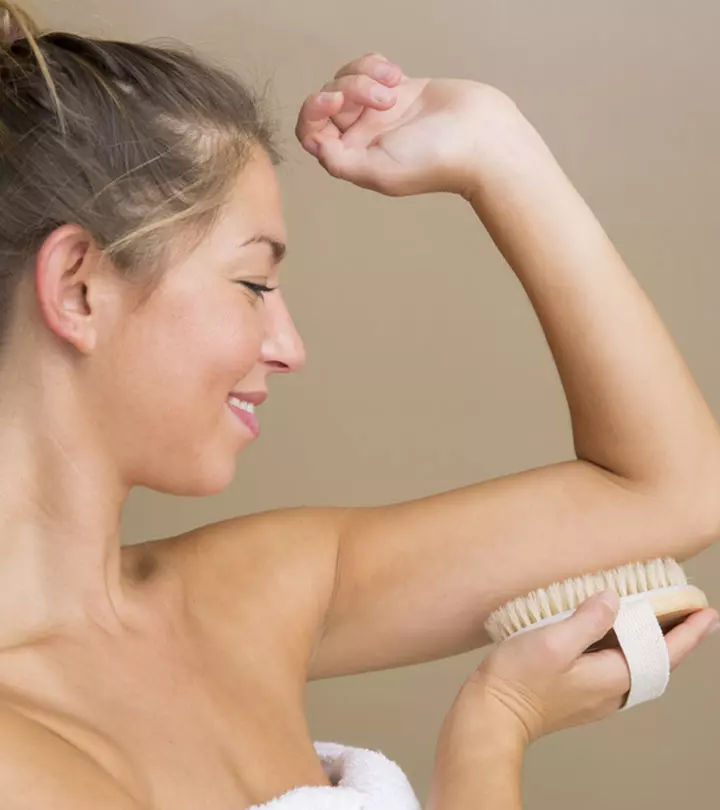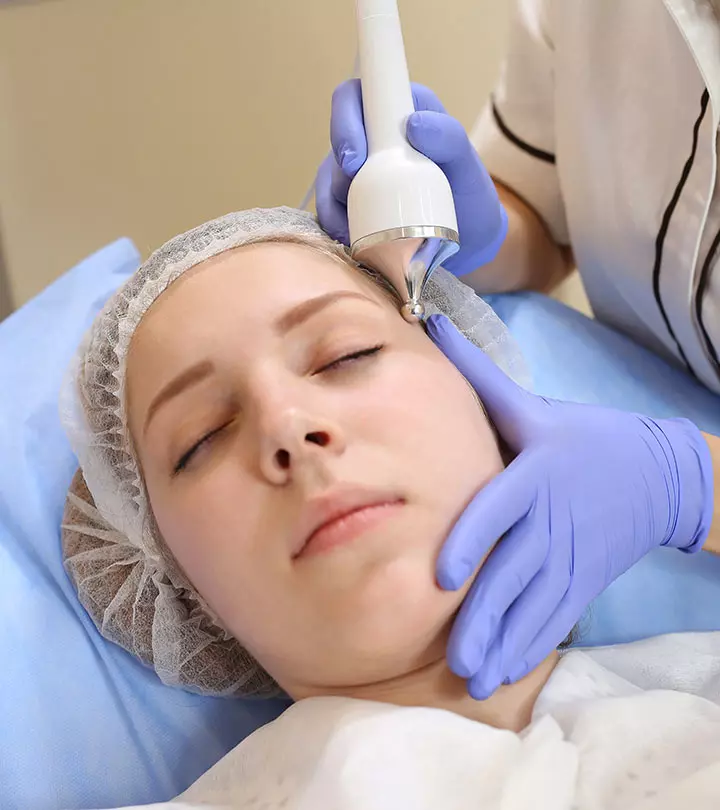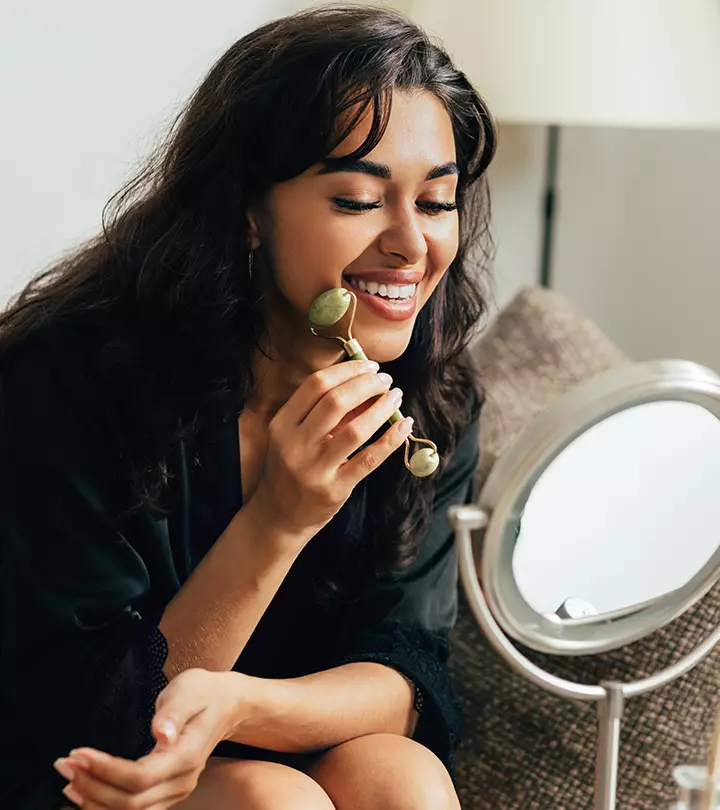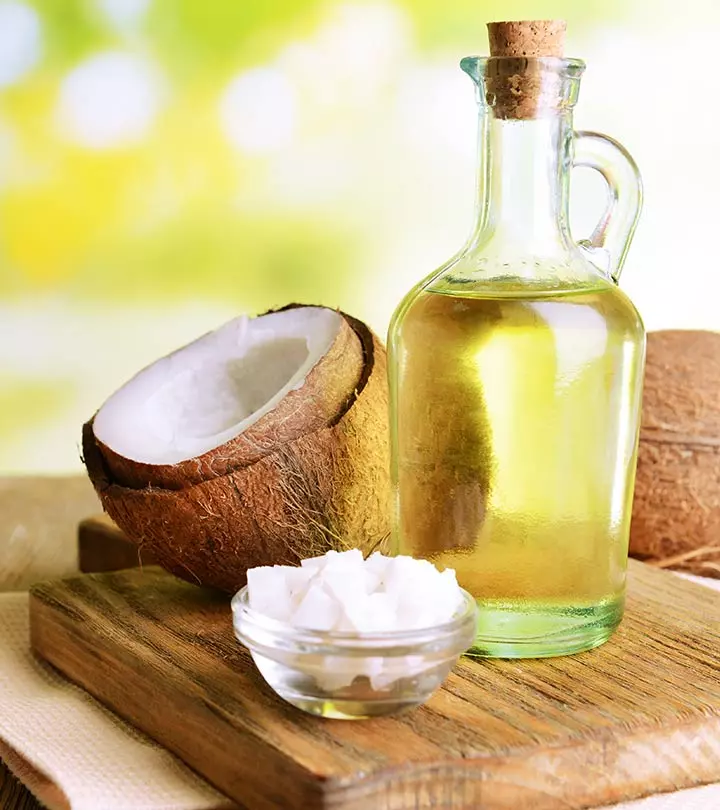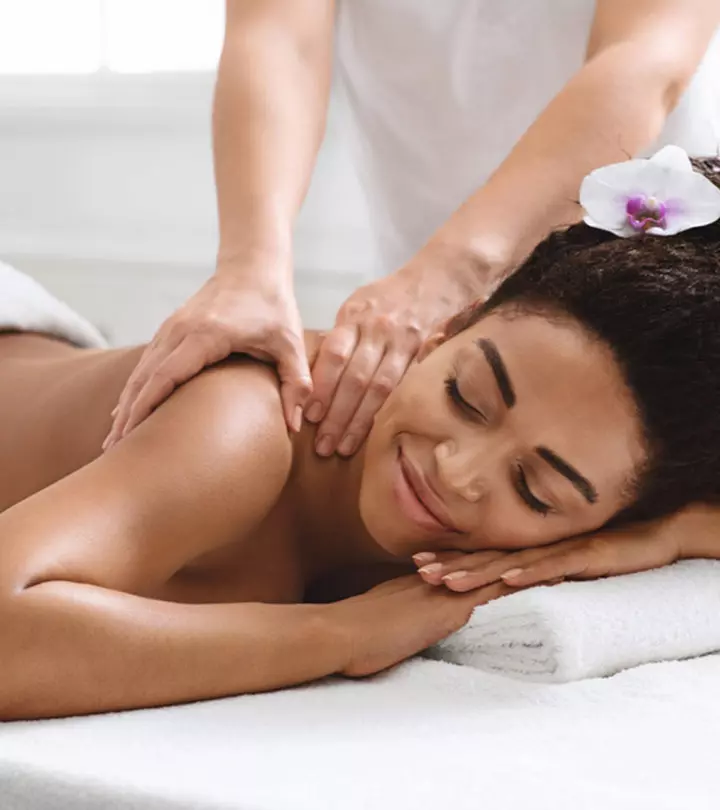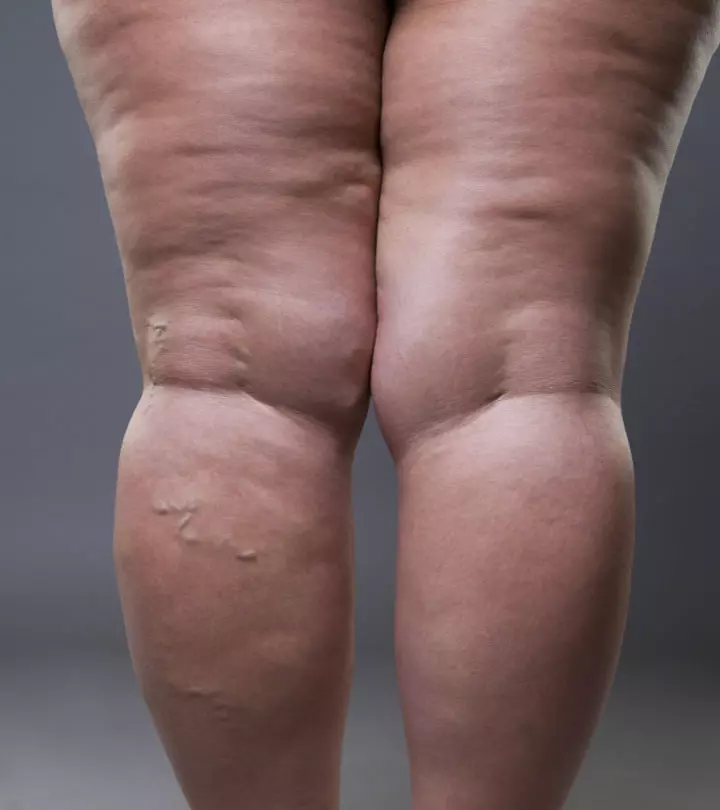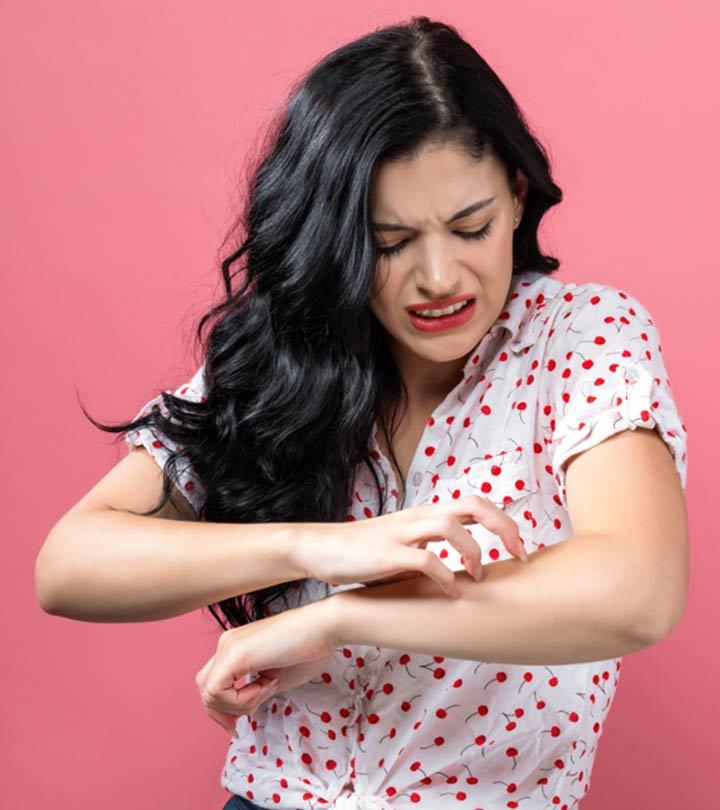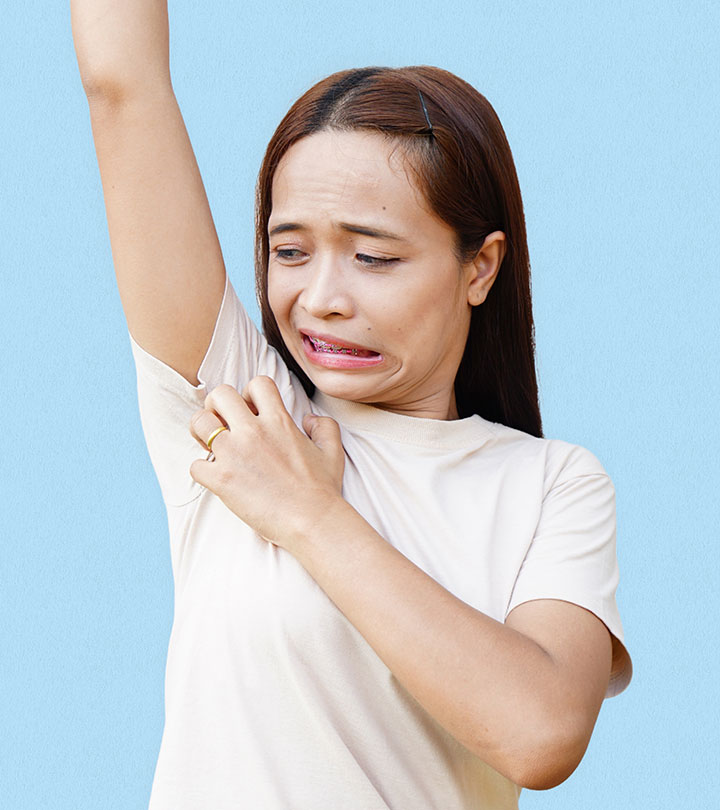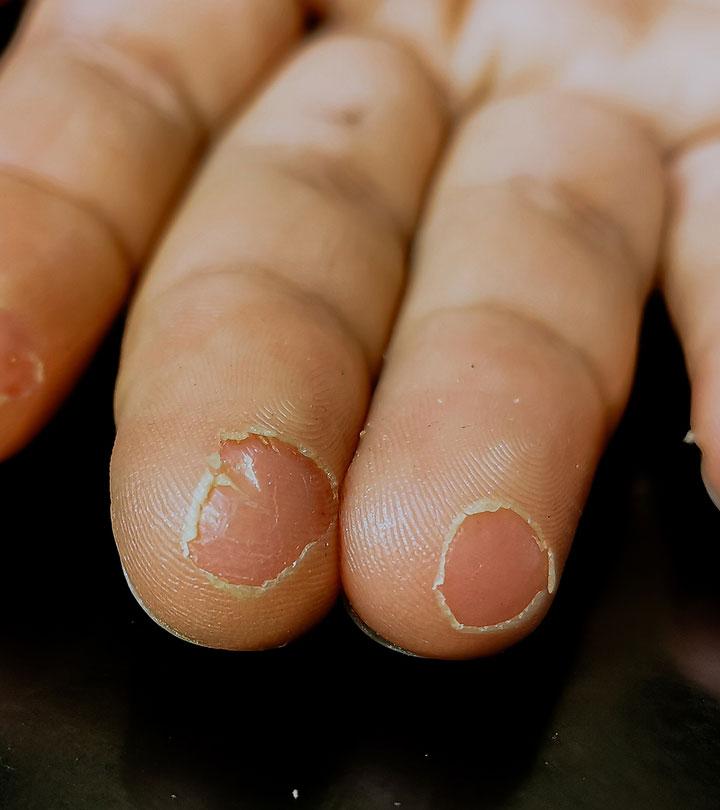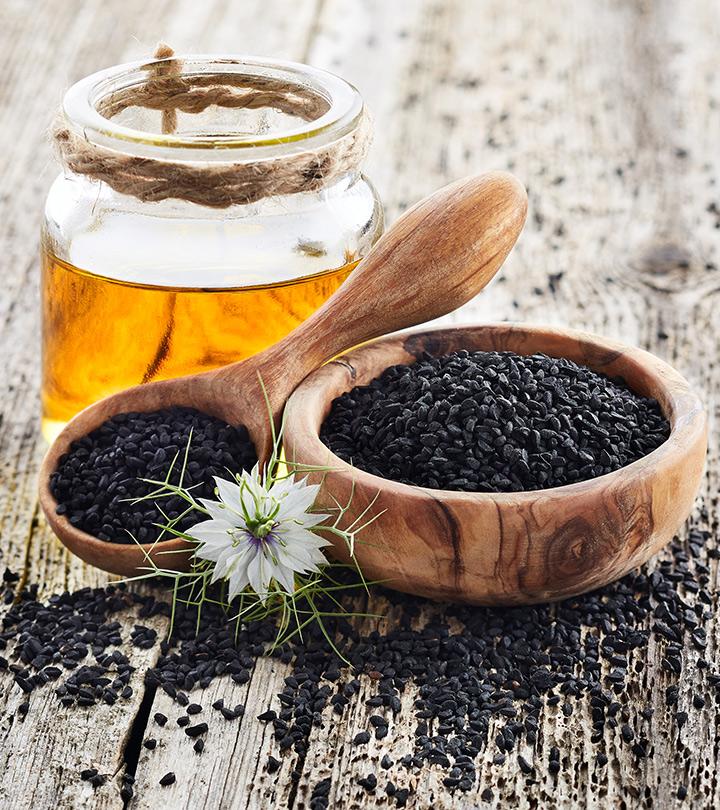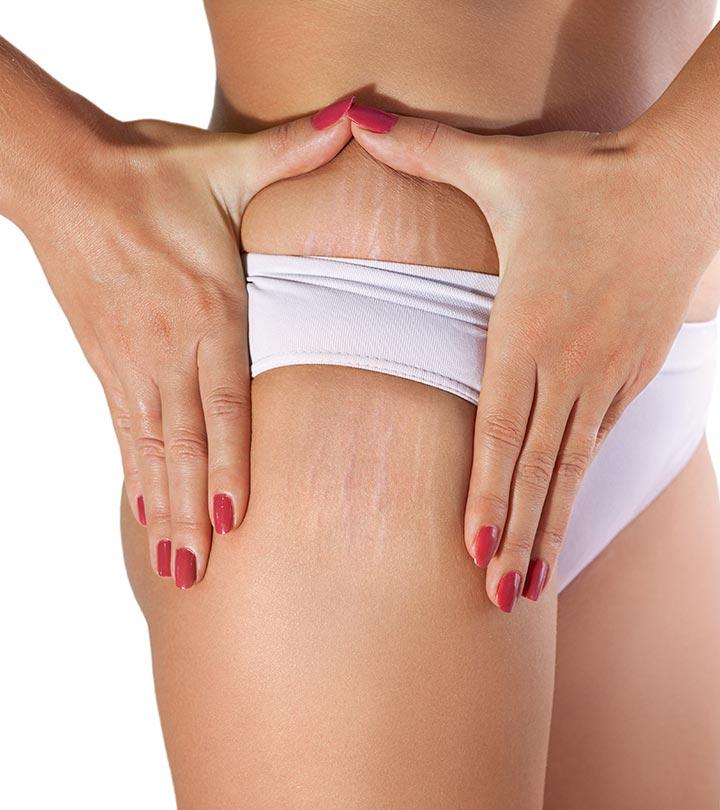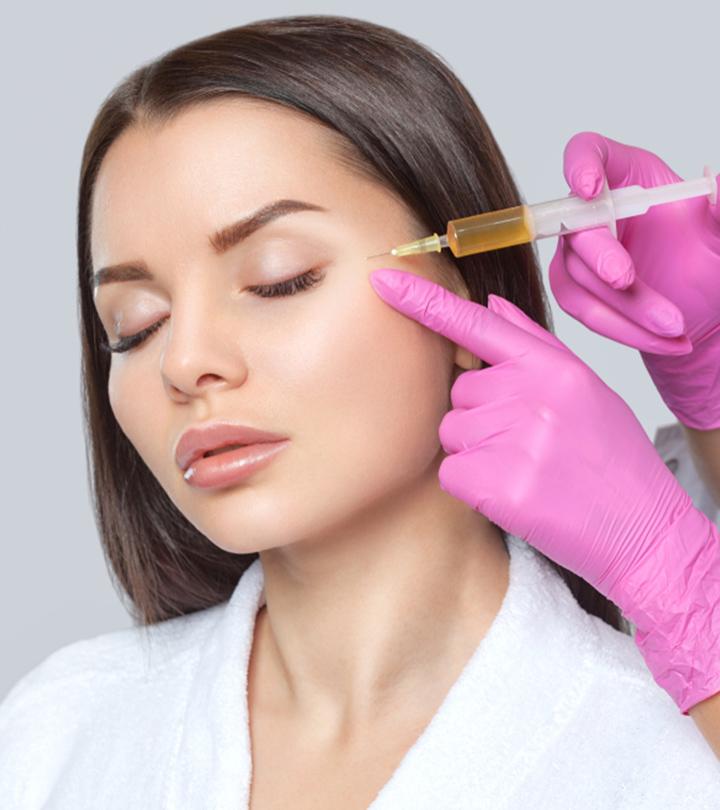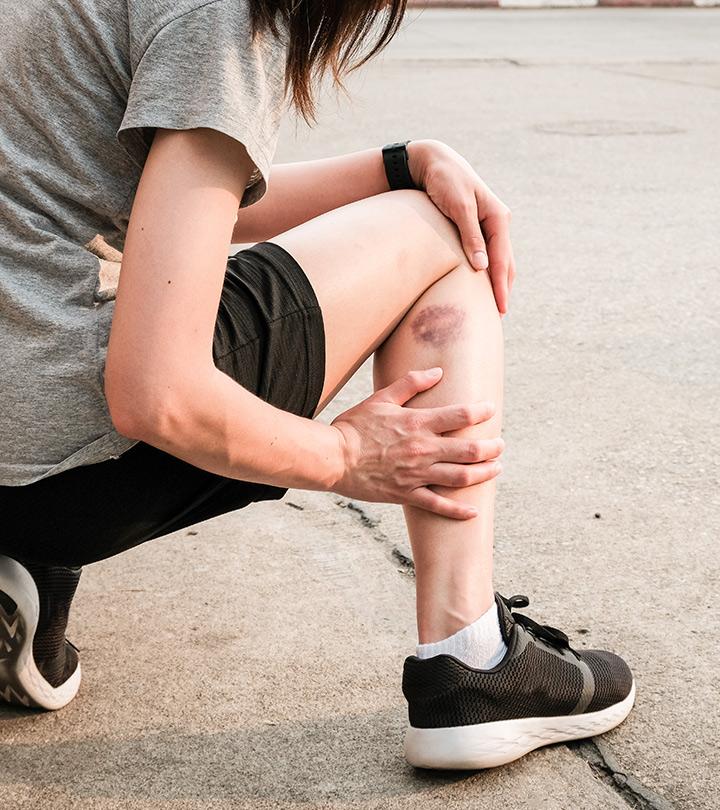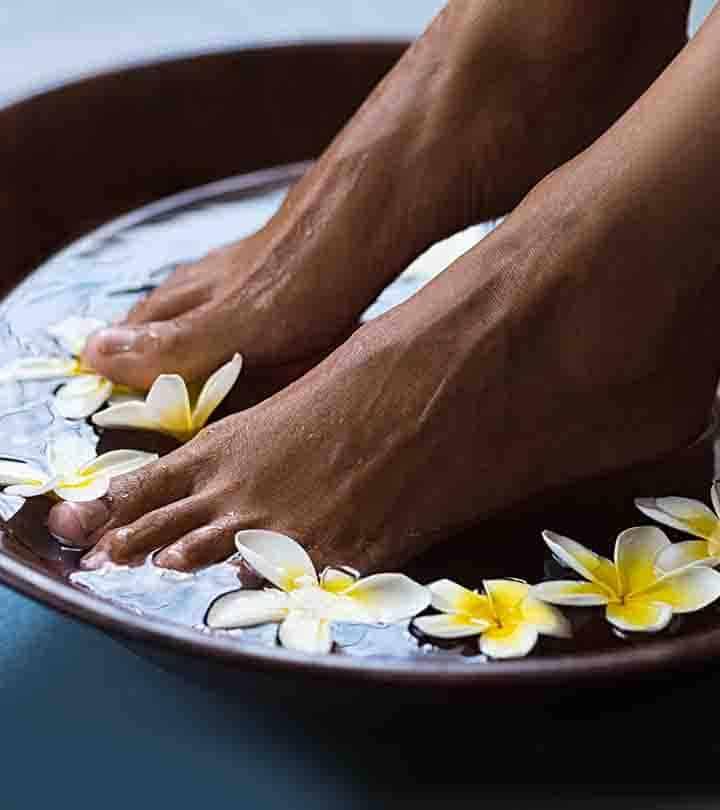Lymphatic Drainage For Face: How To Do And Its Benefits
Master the proper ways to perform this massage technique and get glowing skin.
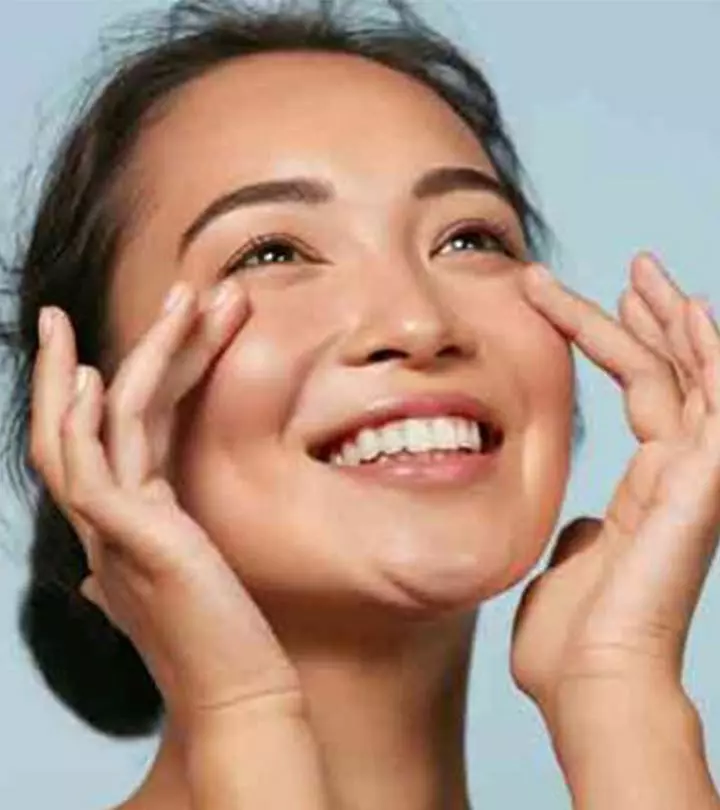
Image: Shutterstock
If you have never tried lymphatic drainage for your face, you should try this therapeutic massage. This lymphatic drainage therapy uses light pressure and rhythmic strokes to promote circulation in lymphatic vessels and flush excess fluid from your face/body tissues (1).
The lymphatic system is a part of the body’s immune system that carries waste and maintains fluid levels. You can maximize the detoxification and improve your skin health with proper lymphatic drainage techniques. Keep reading to understand lymphatic drainage benefits, how to do lymphatic drainage massage for the face, and the risks.
In This Article
What Is Lymphatic Drainage Facial Massage?
Lymphatic drainage is a gentle massage therapy where lymphatic fluid is drained through lymph nodes. This drainage aids in the removal of waste from facial tissues (2). It may also help limit a variety of skin problems like breakouts, skin dryness, and others.
Lymphatic drainage gives the face a lovely bounce. It helps balance out the connective tissue (fascia) affected by stress.
This massage will allow your lymphatic system to improve the delivery of new and important nutrients to your cells while clearing out the excess fluid.
 Trivia
TriviaNow that you know what lymphatic drainage massage is, it’s time to explore how it can help you.
Benefits Of Lymphatic Drainage Massage For Face
There are numerous facial lymphatic drainage massage benefits. However, no significant research studies have been conducted to back these claims. Most evidence is anecdotal.
1. May Boost Your Skin Radiance
Lymphatic drainage may increase blood flow and enhance your complexion (3), (4), making you look better when practiced daily. It’s especially suggested for people with dull skin.
Certified Lymphatic Enhancement Therapy (L.E.T) Practitioner, Lourdes D’Sylva, says, “By encouraging the flow of lymph fluid, you’re allowing the body to get rid of cellular and metabolic waste. The fluid gets filtered out and the waste leaves your body. This minimizes scarring and helps the body fight the viruses and bacteria that cause acne and blemishes. It also reduces puffiness by getting rid of any stored fluids.”
2. May Fix Fine Lines And Wrinkles
Lymphatic facial massage may help smoothen facial muscles and fascia (the underlying tissues of the face). The massage may also lift sagging facial features and reduce wrinkles and fine lines (5).
“Lymphatic drainage facials boost the elasticity in skin because they stimulate collagen production and increase cell turnover rates. So, yes, they can help with those fine lines and wrinkles,” says Lourdes D’Sylva.
3. May Reduce Stress And Anxiety
Lymphatic massage is non-invasive and quite calming and therapeutic. It enhances the feeling of well-being. It also may lower anxiety and stress (6).
4. May Minimize Signs Of Fatigue
Lymphatic drainage massage for relaxation firms the skin and aids in the restoration of energy and vigor. It helps revitalize tissues and reduces the appearance of under-eye dark circles and puffiness.
Note: Lymphatic facial massage is not suggested under certain circumstances. Hence, consult a qualified esthetician before booking a treatment.
 Fun Fact
Fun FactNow you can try lymphatic drainage at home too with the help of a facial roller. Let us understand how you can use it.
How To Use A Face Roller For Lymphatic Drainage?
You need to stroke the roller always in the direction of a lymph node, starting from the middle of the face and moving outwards (under your ear or temple). Practice caution while performing this procedure by yourself at home. Ensure you thoroughly understand the procedure from a licensed specialist before performing it. Here’s how to execute a detoxifying facial rolling procedure:
- Roll in the upward direction from the clavicle to the top of the neck with a jade roller. Start from the middle line of the neck and work your way to the ear three times.
- Roll from the middle of your chin, across your jaw, and to your hairline three times, finishing with a roll down to the clavicle.
- Finally, roll three times from the middle of the forehead to the temple, ending with a roll to the clavicle.
Tip: Store your roller in the refrigerator to keep it cool. While most gem rollers are cold, using the extra-chilled one shrinks pores temporarily and wakes up a tired face at the end of the day (or early in the morning). The roller is ideal for usage before you step outside. You will notice a difference in your face in a couple of weeks if you use the roller twice to thrice a week for at least five minutes.
Ernie, a blogger, shared that she like likes to moisturize her face with essences, serums, or facial oils before using a facial roller for massage and lymphatic drainage. She states in one of her blog posts, “I just feel that the extra sleekness of the facial oil makes it easier for me to roll and massage my face (i).
After lymphatic drainage, it’s essential to follow a few post-massage guidelines to maximize its benefits and avoid any potential side effects. Learn more in the next section.
What To Do After A Lymphatic Drainage Massage?
- Stay Hydrated: Drink plenty of water to help flush out any toxins that may have been released during the massage.
- Move And Exercise: Light physical activity, like walking, can help maintain lymphatic circulation.
- Avoid Heavy Meals: Opt for lighter, easily digestible meals after the massage.
- Rest And Relax: Give your body time to recover and respond to the massage. Avoid participating in strenuous activities immediately afterward.
- Avoid Hot Baths Or Saunas: Steer clear of hot baths or saunas as they can dehydrate the body.
- Listen To Your Body: Pay attention to any reactions or discomfort following the massage and consult your therapist if needed.
Although lymphatic drainage is one of the most common therapeutic massage treatments, it has some side effects too. Find more in the next section.
Side Effects
Lymphatic massage should only be practiced by a massage therapist who has been trained in the technique. However, if you perform this at home without consulting a doctor, you may experience some side effects like:
- Headache
- Swelling
- Muscle aches
- Nausea
- Dizziness
- Skin breakouts
Note: These side effects are purely based on anecdotal evidence.
Lymphatic drainage on the face is a therapeutic massage technique with numerous advantages. It can improve the appearance of your skin by making it cleaner, smoother, and healthier. The anti-aging properties of lymphatic drainage may aid in the reduction of fine lines and wrinkles. It may also help to depuff your face. Although it doesn’t live up to the reputation of being a nonsurgical facelift, it is generally considered safe. You may try doing it at home. However, remember that only a lymphatic massage practitioner who has been trained in the technique should perform it.
Additionally, massaging the face also lowers muscle tension, reduces pressure, and eliminates toxins. However, lymphatic massage should only be performed by a professional esthetician who is licensed in the treatment. Performing it yourself without the right knowledge may cause swelling, skin outbreaks, and more.
Frequently Asked Questions
Can poor lymph drainage cause acne?
Yes, anecdotal evidence suggests that blockage of the lymphatic system with toxin-filled fluid may result in acne.
What is the fastest way to cleanse your lymphatic system?
You can try simple tips like engaging in physical activity, eating a balanced diet, and managing your stress effectively to help cleanse your lymphatic system.
How do I know if I need lymphatic drainage?
If you experience bloating, swollen lymph nodes, recurring infection, pain, and dry skin, then you may need a lymphatic drainage massage.
Key Takeaways
- Lymphatic drainage is a gentle massage technique that promotes lymphatic circulation and flushes excess fluid from the face. It involves light pressure and rhythmic strokes.
- Facial lymphatic drainage may help improve skin brightness, diminishes fine lines and wrinkles, reduces tension and anxiety, and lessens fatigue indicators.
- However, only a qualified massage therapist should perform lymphatic massage. Performing it yourself without the right knowledge may result in swelling, skin breakouts, and other complications.
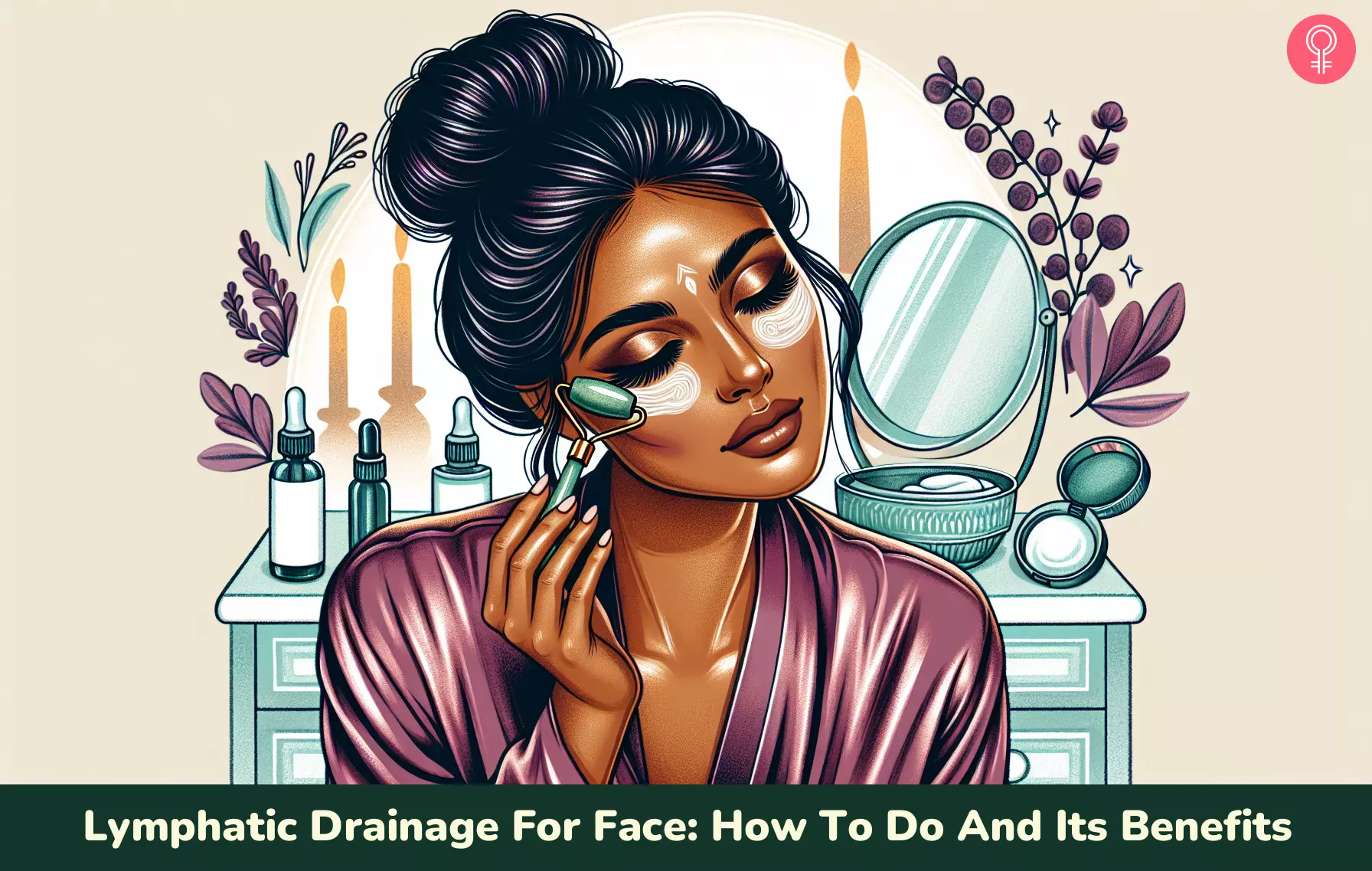
Image: Dall·E/StyleCraze Design Team
Discover the art of lymphatic drainage through this informative video. Click on it to learn different techniques to reduce facial swelling and promote a healthy, rejuvenated complexion.
Personal Experience: Source
StyleCraze's articles are interwoven with authentic personal narratives that provide depth and resonance to our content. Below are the sources of the personal accounts referenced in this article.
i. How to-facial massage using precious stoneshttps://erniewornie.wordpress.com/2019/12/22/how-to-facial-massage-using-precious-stones/
References
Articles on StyleCraze are backed by verified information from peer-reviewed and academic research papers, reputed organizations, research institutions, and medical associations to ensure accuracy and relevance. Read our editorial policy to learn more.
- Systematic Review of Efficacy for Manual Lymphatic Drainage Techniques in Sports Medicine and Rehabilitation: An Evidence-Based Practice Approach
https://www.ncbi.nlm.nih.gov/labs/pmc/articles/PMC2755111/ - Effects of Manual Lymphatic Drainage Techniques on Conditions Affecting the Musculoskeletal System: A Systematic Review
https://www.researchgate.net/publication/345634286_Effects_of_Manual_Lymphatic_Drainage_Techniques_on_Conditions_Affecting_the_Musculoskeletal_System_A_Systematic_Review - Manual lymphatic drainage: Exploring the history and evidence base
https://www.researchgate.net/publication/44683866_Manual_lymphatic_drainage_Exploring_the_history_and_evidence_base - Age-related changes in skin topography and microcirculation
https://pubmed.ncbi.nlm.nih.gov/16328340/ - Manual therapy in the treatment of facial wrinkles and sagging: a quantitative-qualitative randomized clinical trial
https://www.researchgate.net/publication/339578363_Manual_therapy_in_the_treatment_of_facial_wrinkles_and_sagging_a_quantitative-qualitative_randomized_clinical_trial - Effects of manual lymph drainage for abdomen on the brain activity of subjects with psychological stress
https://www.ncbi.nlm.nih.gov/labs/pmc/articles/PMC5361017/
Read full bio of Dr. Robert S. Bader
Read full bio of Anjali Sayee
Read full bio of Swathi E






